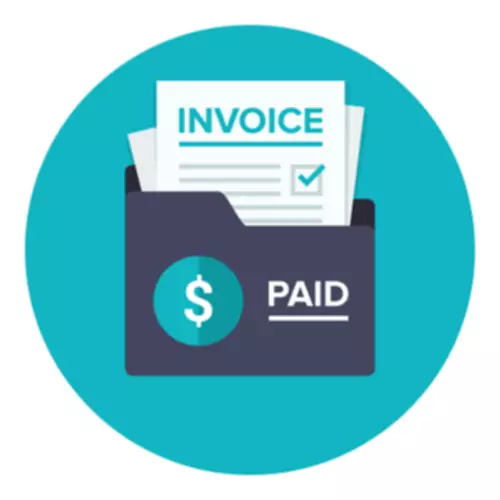Bookkeeping
Cash Flow Statement: How to Read and Understand It
Content

Net change in cash increases or decreases in a company’s cash balance in a given period of time. Once you have your three types (operating, investing, and financing) of cash flow calculated individually, you can simply add them up to give you your net https://www.bookstime.com/articles/accounting-consulting change in cash. In relation to cash flow, tracking the cash flow-to-debt ration can provide a good overview of the financial health of your business. It’s important to keep your liabilities on the low end in order to maintain a positive cash flow.
What is the cash flow report?
A cash flow statement provides data regarding all cash inflows that a company receives from its ongoing operations and external investment sources. The cash flow statement includes cash made by the business through operations, investment, and financing—the sum of which is called net cash flow.
To maintain growth and expansion, companies must have a positive operating cash flow. The cash flows from operating activities section provides information on the cash flows from the company’s operations (buying and selling of goods, providing services, etc.). With the most likely used indirect method, the starting point of this section is the company’s net income. It is followed with adjustments to convert the amount of net income from the accrual method to the cash amount. The cash from operating activities can be straightaway computed by adding all the cash receipts and deducting all the cash payments. Later the cash from all the three activities, i.e., operating, investing, and financing, can be summed up to get the closing balance of cash and cash equivalents.
Cash Flow from Investing Activities
Cash flow analysis is a review of business cash flows with a goal of finding trends or opportunities that allow for improved business decisions and improved long-term growth and sustainability. Companies can use free cash flow (in combination with a discounted cash flow analysis) as a metric to determine how much cash the company can spend on new projects or other uses for outflows of cash. Reports demonstrate that small businesses consider cash flow one of their top 5 challenges.

While it’s also important to look at business profitability on the income statement, cash flow analysis offers critical information on the financial health of a company. It tells you if cash inflows are coming from sales, loans, or investors, and similar information about outflows. Most businesses can sustain a temporary period of negative cash flows, but can’t sustain negative cash flows long-term. Cash flow is a measure of how much cash a business brought in or spent in total over a period of time. Cash flow is typically broken down into cash flow from operating activities, investing activities, and financing activities on the statement of cash flows, a common financial statement. A cash flow statement is one of the most important financial statements a business can create.
What is Cash Flow Analysis?
The indirect method formula begins the operating activities section with net income (loss) from the income statement. The operating activities section reconciles to cash flow from operating activities by adjusting for non-cash items and changes in working capital balances. Assets include land, property, plant & equipment, investments in other companies, etc. In a nutshell, an income statement measures revenue, expenses, and profitability.

There are several types of cash flow depending on what you are trying to measure. Understanding the different types is important, otherwise, two people may be talking about two very different measurements without realizing it. The Cash Flow Statement Indirect Method starts with net income and adds or deducts from that amount for non-cash revenue and expense items. Small changes in any of these line items can show the impact of how paying taxes, hiring more people, buying equipment, and more can affect a business.
Cash Flow From Financing
For example, if the balance of accounts receivable increases, that increase is revenue but not cash because the money has not been received yet. A cash flow statement is a financial statement that shows how cash entered and exited a company during an accounting cash flow statement period. Cash coming in and out of a business is referred to as cash flows, and accountants use these statements to record, track, and report these transactions. Using the indirect method, actual cash inflows and outflows do not have to be known.
Since it’s simpler than the direct method, many small businesses prefer this approach. Also, when using the indirect method, you do not have to go back and reconcile your statements with the direct method. The direct method takes more legwork and organization than the indirect method—you need to produce and track cash receipts for every cash transaction.
Company
A cash flow statement (CFS) is one of a business’s most important financial reportsFinancial ReportsFinancial reporting is a systematic process of recording and representing a company’s financial data. The reports reflect a firm’s financial health and performance in a given period. Management, investors, shareholders, financiers, government, and regulatory agencies rely on financial reports for decision-making.read more. Since cash provides liquidity, it is decisive for the survival of a business.
- Investing and financing activities are also included as sections in the indirect method cash flow statement to reach the ending cash & cash equivalents balance from the balance sheet.
- Negative cash flow is when you have more money going out than coming in—when your revenue is not enough to cover your expenses.
- For instance, if you are a startup, you may have a positive cash flow, but you could also have failed to make a profit for the year.
- If free cash flow is positive, that means the company is making enough money to maintain and grow the business, as well as return money to shareholders and creditors.
- The opposite of this is the accrual basis of accounting which counts cash if earned or expensed, even if those transactions have not been completely processed.
